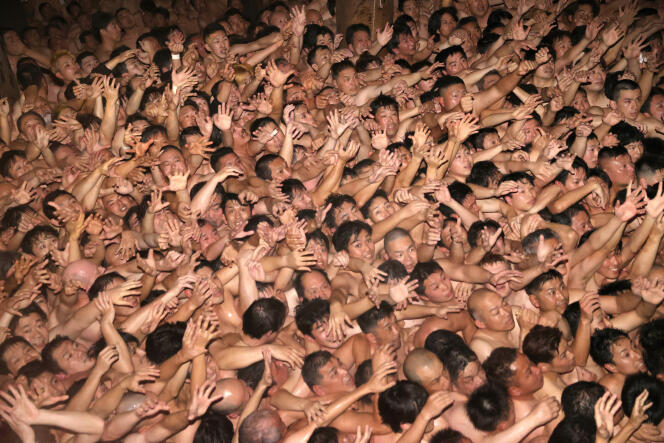After a three-year hiatus as a result of Covid-19 pandemic, the “bare festivals” (hadaka matsuri) have resumed in Japan. These festivals – a few of that are 1000’s of years previous – have a good time the purification and renewal of the agricultural cycle in February initially of the lunar 12 months. They proceed to assemble 1000’s of contributors and vacationers.
They’ve additionally advanced as a result of nation’s ageing inhabitants and the (timid) progress of gender equality. Ladies had been by no means formally excluded from these festivities, the place males, enjoying the lead function, wearing easy conventional underwear referred to as fundoshi – a protracted strip of twisted white cotton between the legs and tied across the loins. Ladies helped arrange the occasions and took half as spectators by cheering on contributors (“Washoi! Washoi!,” “Go on! Go on!”). Nonetheless, till just lately, ladies had been excluded from many of the rituals of this sacred exaltation.
But that is the primary 12 months ladies have participated within the spiritual celebrations held at most temples and shrines. Wearing conventional hip-length jackets (happi) and white shorts, they carried lengthy bamboo trunks on their shoulders to which the locals’ needs had been connected. However, they continue to be behind the boys’s fray. Regardless of widespread protection within the press, this growth is much less historic than it might sound. These celebrations was once blended earlier than the Meiji Revolution (1868). Espousing Western requirements of decorum, the rulers of the time then forbade ladies from being concerned in these collective discharges of vitality.
Purification and scapegoats
In sensible phrases, bare festivals start at nightfall. Tons of, if not 1000’s, of males of all ages, a twisted fabric (hachimaki) girding their heads to stop sweat from obscuring their imaginative and prescient, and wearing a fundoshi, start by purifying themselves. Standing in a river or the ocean, they spray themselves with icy water from small tubs.
Then, after praying for good harvests, they rush in a scramble of half-naked our bodies brandishing lanterns alongside the typically snow-covered path resulting in Buddhist temples or Shinto shrines. These shrines, central to native polytheism targeted on harmonizing people with their setting, resonate with cries of “Jassa joyasa!” (“Out with the evil spirits!”) echoing by the encircling woods. The melee continues contained in the temple or sanctuary to catch talismans thrown by monks.
One such occasion takes place in Oshu, in Iwate prefecture (northeast of Honshu island), in the course of the Sominsai pageant on the Kokuseki Buddhist temple. This pageant, which dates again to the 8th century and was acknowledged as a UNESCO intangible heritage website in 1995, used to happen on the 7th day of the lunar calendar (February 1). It was held for the final time this 12 months, swept away by the twin results of falling delivery charges and the ageing of the small city’s inhabitants. “The pageant requires a lot preparation; we simply could not sustain with the dwindling variety of younger folks,” defined Daigo Fujinami, the temple’s superior. The bare pageant will henceforth get replaced by prayer ceremonies.
You’ve 66.56% of this text left to learn. The remaining is for subscribers solely.
